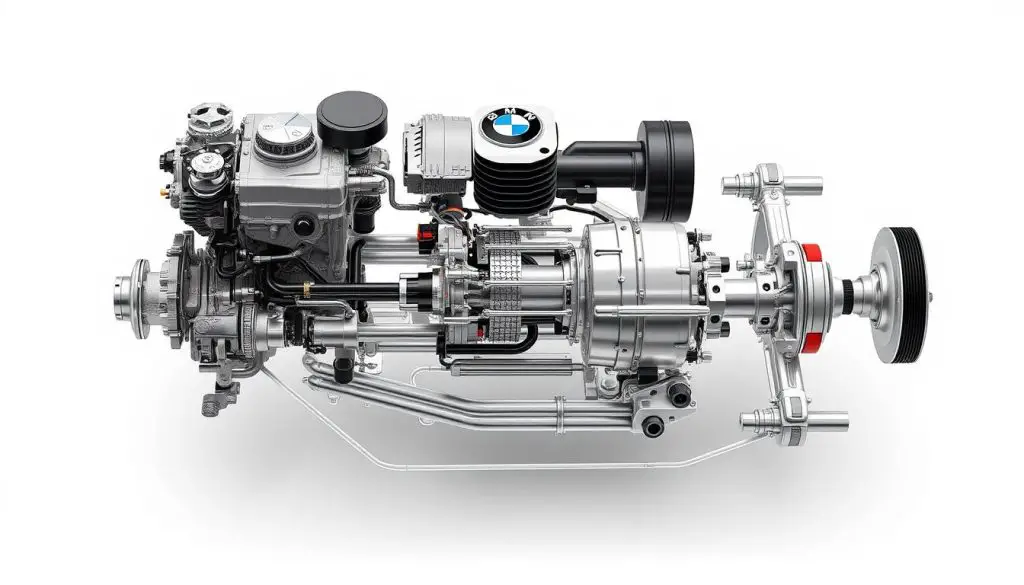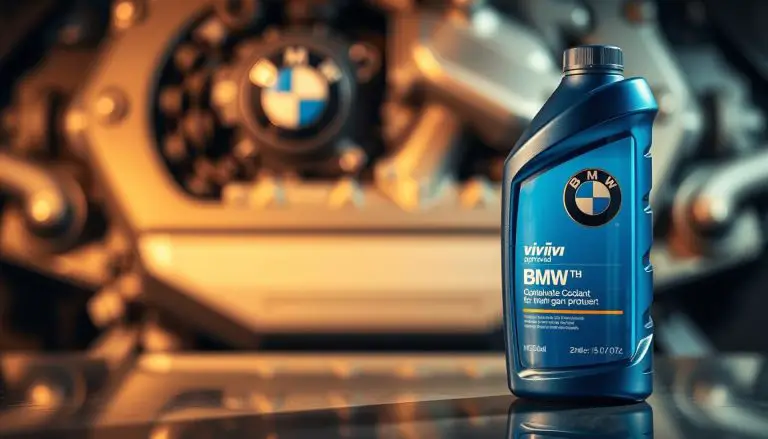Experiencing issues with your vehicle’s drivetrain can be frustrating and concerning. For BMW owners, understanding the root cause of these problems is crucial for effective troubleshooting and repair.
The drivetrain is a complex system that requires precise diagnosis and repair. This comprehensive guide is designed to walk you through the process of identifying and fixing common drivetrain issues, ensuring your vehicle runs smoothly and efficiently.
Key Takeaways
- Understand the components of your BMW’s drivetrain system.
- Identify common symptoms of drivetrain malfunction.
- Learn step-by-step procedures for diagnosing drivetrain issues.
- Discover common causes of drivetrain problems and how to address them.
- Apply model-specific troubleshooting techniques to your vehicle.
Understanding BMW Drivetrain Systems
The drivetrain is a pivotal element within any BMW vehicle, tasked with the transmission of power from the engine to the wheels. It is a sophisticated ensemble of components, each playing a vital role in ensuring a seamless driving experience. This intricate system is designed to optimize power transfer and efficiency.
Components of BMW Drivetrain
The BMW drivetrain’s core components include the transmission, driveshaft, transfer case, differentials, and axles. The transmission is instrumental in adjusting the gear ratio to enhance power and efficiency. The driveshaft then transmits this power to the transfer case or differential, facilitating the vehicle’s movement.
How BMW Drivetrain Systems Work
BMW drivetrain systems function by harnessing power from the engine and directing it to the wheels through a network of mechanical and electronic components. The system’s performance and efficiency are meticulously managed by advanced electronic control units (ECUs). These sophisticated systems ensure optimal power distribution and vehicle control.
Different Drivetrain Types in BMW Models
BMW’s lineup features a variety of drivetrain configurations, including rear-wheel drive (RWD) and all-wheel drive (AWD) systems, branded as xDrive. The xDrive system significantly improves traction and stability, making it invaluable in challenging driving environments.

Common Symptoms of BMW Drivetrain Malfunction
The drivetrain, a pivotal element within a BMW, manifests its malfunction through several distinct symptoms. Early identification of these indicators is paramount to averting further deterioration and the resultant financial burden of repairs.
Warning Lights and Dashboard Indicators
The initial harbinger of drivetrain malfunctions is the illumination of dashboard warning lights. The BMW dashboard, replete with advanced diagnostic capabilities, swiftly detects anomalies within the drivetrain. The appearance of lights such as “Drivetrain Malfunction” or “Service Engine Soon” unequivocally signals the need for prompt attention.
These dashboard alerts are intricately linked to the vehicle’s onboard diagnostics system, which generates specific error codes pertinent to drivetrain malfunctions. Mastery over these codes is essential for precise diagnosis.
Performance Issues and Driving Symptoms
Performance anomalies serve as a common manifestation of BMW drivetrain malfunction. Drivers may encounter slipping or hesitation during acceleration, indicative of transmission or other drivetrain component malfunctions. Difficulty in gear shifting or a discernible delay in gear engagement further underscores drivetrain-related issues.

Unusual Noises and Vibrations
Unusual auditory cues and tactile sensations during vehicular operation are indicative of drivetrain malfunctions. Grinding, whining, or clunking sounds, notably during acceleration or deceleration, suggest differential, transmission, or other drivetrain component problems. Concurrently, vibrations experienced through the vehicle, predominantly during acceleration, signify drivetrain imbalance or misalignment.
| Symptom | Possible Cause |
|---|---|
| Warning Lights | Drivetrain Malfunction, Sensor Issues |
| Performance Issues | Transmission Problems, Clutch Issues |
| Unusual Noises | Differential Issues, Worn-out Components |
| Vibrations | Driveshaft Imbalance, Misaligned Components |
Diagnosing BMW Drivetrain Issues
The process of diagnosing BMW drivetrain malfunctions is complex, necessitating a multifaceted approach. This includes the utilization of OBD scanners, meticulous physical inspections, and comprehensive test drives. The accuracy of the diagnosis is paramount, as it directly influences the efficacy of the subsequent repair efforts.
Using OBD Scanners for Error Codes
Contemporary BMWs are endowed with onboard diagnostics (OBD) systems, accessible via OBD scanners. These tools extract error codes from the vehicle’s computer, offering critical insights into the drivetrain’s malfunctions.
Steps to retrieve error codes:
- Connect the OBD scanner to the vehicle’s OBD port.
- Turn on the ignition and follow the scanner’s instructions.
- Record the error codes displayed on the scanner.
Physical Inspection Techniques
A detailed physical examination is indispensable for identifying drivetrain malfunctions that may not generate error codes. This involves scrutinizing the drivetrain components for any signs of wear, damage, or leaks.
Test Drive Diagnostic Procedures
A test drive serves as a crucial diagnostic tool, enabling the replication of the drivetrain issue. This allows for a deeper understanding of its symptoms and behavior under different driving conditions. It is essential to observe any unusual noises, vibrations, or performance anomalies during the test drive.
Tools Needed for Proper Diagnosis
| Tool | Description |
|---|---|
| OBD Scanner | Retrieves error codes from the vehicle’s computer. |
| Inspection Lights | Illuminates areas under the vehicle for better visibility. |
| Torque Wrench | Used for tightening or loosening bolts to specification. |
By integrating these diagnostic methodologies, technicians can effectively pinpoint and rectify BMW drivetrain malfunctions.
Common BMW Drivetrain Malfunction Causes
Grasping the fundamental causes of drivetrain malfunctions in BMWs is imperative for efficacious repairs. The drivetrain system, a complex amalgamation of various components, may fail due to problems within its constituent parts.
Transmission-Related Problems
Transmission-related malfunctions are a prevalent cause of drivetrain issues in BMWs. These problems manifest differently in automatic and manual transmissions.
Automatic Transmission Issues
BMW’s automatic transmissions often experience slipping between gears, delayed engagement, and failure to shift properly. These symptoms can be attributed to worn-out clutch packs, faulty solenoid packs, or insufficient transmission fluid levels.
Manual Transmission Problems
Manual transmission malfunctions, though less frequent than those in automatic transmissions, can still occur. Symptoms include difficulty shifting gears and grinding noises during operation. These issues can stem from worn-out clutch discs, misaligned clutch forks, or worn-out synchronizers.
Transfer Case Issues in xDrive Models
Transfer case malfunctions are specific to BMW’s xDrive models, which boast all-wheel drive capabilities. Problems can arise from worn-out clutch packs within the transfer case, leading to vibrations and noise during operation. Regular maintenance, such as fluid checks, can help prevent these issues.
Differential and Axle Failures
Differential and axle failures can cause significant drivetrain malfunctions. Symptoms include unusual noises during turns and vibrations while driving. These failures can result from worn-out bearings, insufficient lubrication, or excessive wear and tear.
Electronic Control Unit Malfunctions
The Electronic Control Unit (ECU) plays a crucial role in managing the drivetrain’s operation. Malfunctions in the ECU can lead to erratic shifting, loss of traction control, and other drivetrain-related issues. Diagnosing ECU problems often requires specialized diagnostic equipment.
In conclusion, drivetrain malfunctions in BMWs can stem from a variety of causes, including transmission, transfer case, differential, and ECU issues. Understanding these potential causes is key to effective diagnosis and repair.
Step-by-Step Repair Procedures
The repair of BMW drivetrain malfunctions necessitates a meticulous sequence of actions, aimed at precise diagnosis and swift resolution. By adhering to a methodical framework, BMW proprietors can address prevalent issues and avert future breakdowns.
Transmission Fluid Replacement and Service
Transmission fluid replacement stands as a pivotal maintenance endeavor for the preservation of BMW drivetrain integrity. Over an extended period, the fluid’s lubricating efficacy diminishes, potentially leading to harm to transmission components. Initiate the fluid replacement by identifying the transmission pan and its drain plug. Employ a socket wrench to extract the plug, allowing the fluid to drain into a receptacle. Post-drainage, reinsert the plug and replenish the transmission with the prescribed fluid type and quantity.
“Regular transmission fluid changes can significantly extend the life of your BMW’s transmission.” It is imperative to refer to your owner’s manual or a repair guide tailored to your BMW model for the precise methodology and specifications.
Sensor Replacement and Calibration
Contemporary BMWs depend on a constellation of sensors to oversee and regulate drivetrain operations. Sensor failure can precipitate a spectrum of issues, from diminished performance to drivetrain malfunctions. The replacement of a defective sensor entails the identification of the sensor, disconnection of its electrical connector, and removal of any retaining hardware. Post-installation, calibration may be imperative to guarantee the sensor’s provision of precise data to the drivetrain control module.
Mechanical Component Repair Techniques
The repair of BMW drivetrain mechanical components, such as the driveshaft or differential, necessitates specialized tools and methodologies. For example, the replacement of a worn driveshaft joint necessitates the expulsion of the antiquated joint and the insertion of a new one, ensuring correct alignment and secure fastening. Adherence to a repair manual specific to your BMW model is crucial to ensure the repair’s correctness.
Software Reset and Programming Procedures
BMW drivetrain control modules are reliant on advanced software to manage drivetrain functions. Occasionally, software-related issues can induce malfunctions, necessitating a software reset or update. This endeavor typically involves the connection of a diagnostic tool to the vehicle’s OBD port and adherence to the manufacturer’s directives for software updates or resets.
Required Tools and Equipment
To execute these repairs, a variety of tools and apparatus are requisite, encompassing:
- Socket wrench set
- Transmission fluid pump
- Diagnostic scanner
- Sensor calibration tools (model-specific)
- Mechanical press (for driveshaft joint replacement)
Utilization of the appropriate tools for the task ensures that repairs are executed with efficiency and precision, thus minimizing the likelihood of further damage to your BMW’s drivetrain.
Model-Specific Drivetrain Troubleshooting
BMW drivetrain malfunctions exhibit considerable variability across distinct models, necessitating a customized troubleshooting methodology. It is imperative to comprehend the unique attributes of your BMW’s drivetrain to effectively pinpoint and rectify potential issues.
3 Series and 5 Series Common Issues
The 3 Series and 5 Series, celebrated for their performance and agility, are not immune to drivetrain malfunctions. These can manifest as transmission slipping, hesitation, or anomalous noises. Proactive maintenance, encompassing transmission fluid assessments, is crucial in averting these afflictions.
X-Series SUV Drivetrain Problems
X-Series SUVs, encompassing the X3 and X5, confront distinct drivetrain challenges stemming from their all-wheel-drive configurations. Predominant issues include transfer case malfunctions and differential failures. Proactive inspections and expedient repairs are imperative to circumvent these complications.
M-Series Performance Drivetrain Concerns
M-Series models, such as the M3 and M5, embody high-performance variants with bespoke drivetrain components. Their high-stress nature can precipitate issues like clutch failures and electronic control unit malfunctions. Vigilant servicing and monitoring are indispensable in averting these problems.
Preventive Maintenance Schedules by Model
Preventive maintenance is paramount in prolonging the lifespan of your BMW’s drivetrain. Each model necessitates a unique maintenance regimen. It is vital to refer to your owner’s manual or consult with a BMW specialist to ascertain the most appropriate maintenance schedule for your vehicle.
Conclusion
Addressing BMW drivetrain malfunctions necessitates a profound comprehension of the drivetrain’s intricacies and the capability to pinpoint issues with precision. Adherence to the methodologies detailed within this discourse empowers BMW proprietors to rectify prevalent drivetrain anomalies, thus preserving their vehicle’s operational efficacy.
The imperative of consistent BMW drivetrain upkeep cannot be overstated, as it serves as a bulwark against future malfunctions and guarantees the vehicle’s enduring viability. This entails periodic inspections, the substitution of deteriorated parts, alongside the implementation of software enhancements and calibration.
Through a commitment to proactive drivetrain maintenance and repair, BMW owners can partake in a more refined driving experience, circumventing the financial burden of future repairs. For instances where complexities arise, recourse to a professional mechanic or a BMW specialist is advisable, ensuring a precise diagnosis and efficacious rectification.
FAQ
What are the common symptoms of BMW drivetrain malfunction?
Indicators of drivetrain malfunction in BMWs include dashboard warning lights, performance anomalies such as slipping or hesitation, and the presence of unusual noises and vibrations.
How do I diagnose drivetrain issues in my BMW?
To diagnose drivetrain malfunctions, one must employ OBD scanners to extract error codes, conduct physical inspections, and undertake test drives to reproduce the symptoms.
What are the common causes of BMW drivetrain malfunctions?
Common malfunctions stem from transmission-related issues, problems with the transfer case in xDrive models, failures of the differential and axle, and malfunctions of the electronic control unit.
Can I replace the transmission fluid in my BMW myself?
Replacing transmission fluid is a task that can be accomplished by the owner, provided the correct procedure is followed and the recommended fluid type for the BMW model is utilized.
How do I troubleshoot drivetrain issues specific to my BMW model?
Troubleshooting drivetrain malfunctions specific to your BMW model necessitates an understanding of the unique characteristics of your vehicle’s drivetrain system. It also involves consulting model-specific repair guides and maintenance schedules.
What are the benefits of regular drivetrain maintenance for my BMW?
Regular maintenance of the drivetrain can prevent common issues, enhance your vehicle’s performance, and extend its lifespan.
Are there any specific tools required for diagnosing and repairing BMW drivetrain issues?
Yes, essential tools include OBD scanners, transmission fluid pumps, and specialized equipment for repairing mechanical components and performing software resets.


